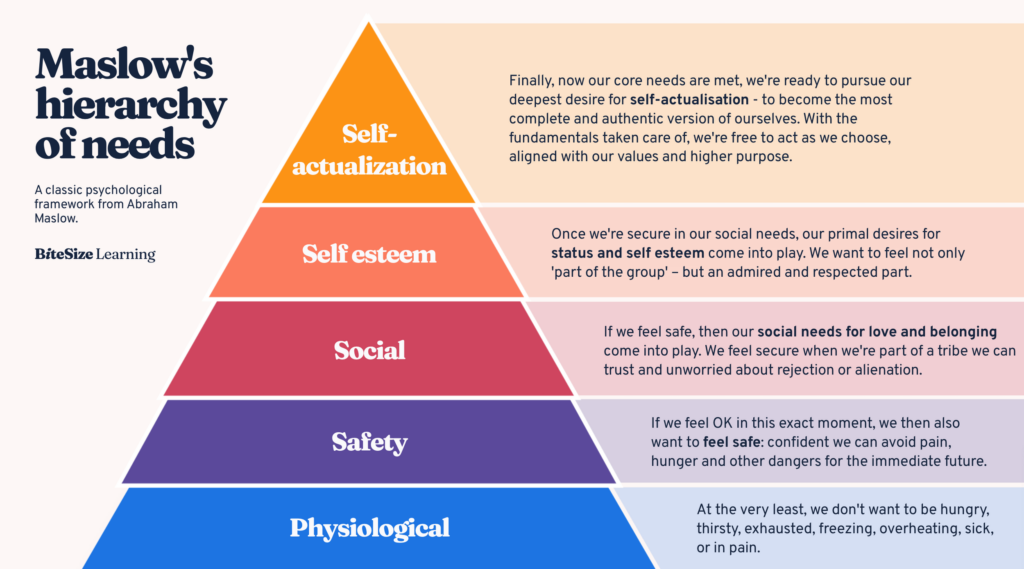
Maslow’s Hierarchy of Needs consists of five levels of needs, which are arranged in a hierarchical structure. These needs are typically depicted in a pyramid, with the most fundamental needs at the base and the higher-level needs at the top. The five levels are:
- Physiological Needs:
- Basic necessities for survival, such as food, water, shelter, sleep, and clothing.
- Safety Needs:
- Security and protection from physical and emotional harm, including personal safety, financial security, health and well-being, and safety nets against accidents and illness.
- Love and Belongingness Needs:
- Social needs, including friendships, family, intimate relationships, and social connections. This level emphasizes the importance of interpersonal relationships and feeling part of a group.
- Esteem Needs:
- The need for self-esteem and the esteem of others. This includes feelings of accomplishment, recognition, respect, and self-worth. There are two types of esteem needs: lower esteem needs (respect from others, status, recognition) and higher esteem needs (self-respect, personal achievement).
- Self-Actualization Needs:
- The need for personal growth and fulfillment, realizing one’s potential, self-improvement, and achieving personal goals. This is the highest level of Maslow’s hierarchy and focuses on self-development and peak experiences.
Maslow later suggested a sixth level called Self-Transcendence, which involves helping others achieve self-actualization, though this is less commonly included in the traditional hierarchy.
-ChatGPT 4o
